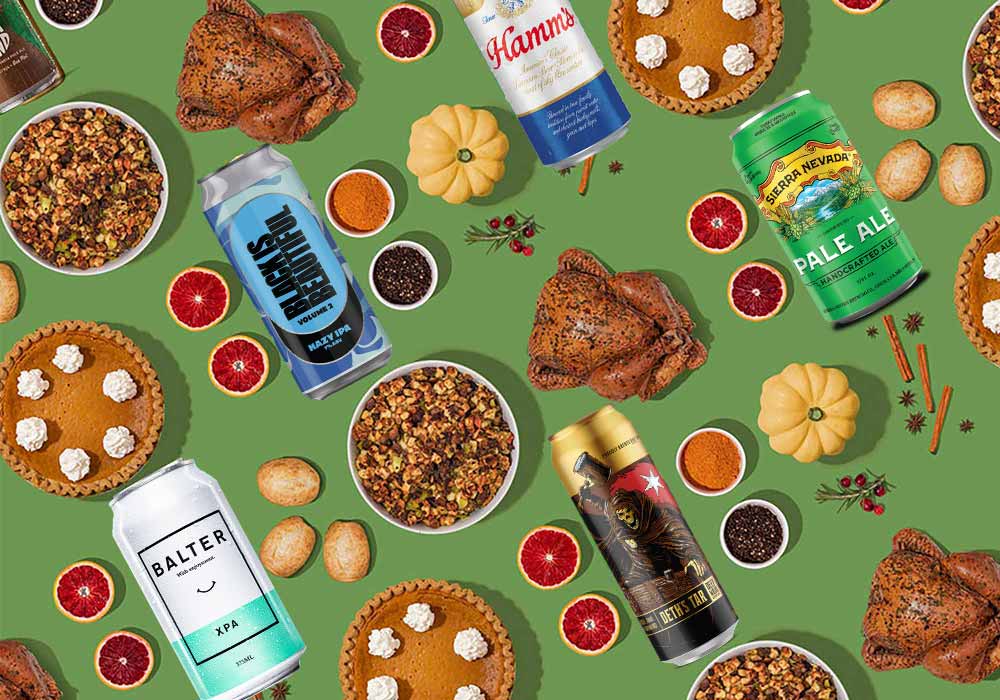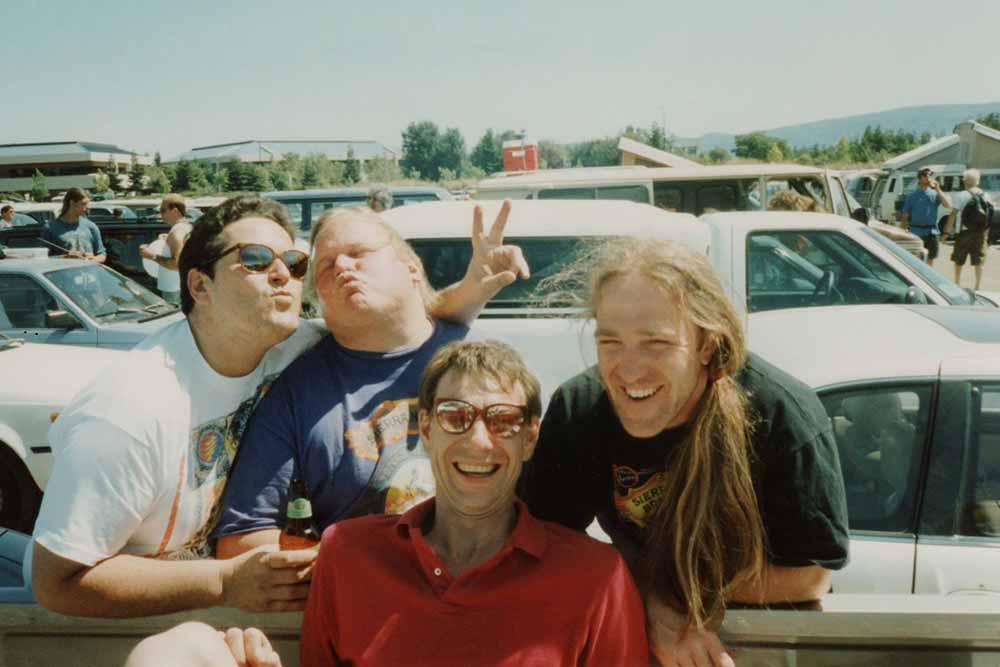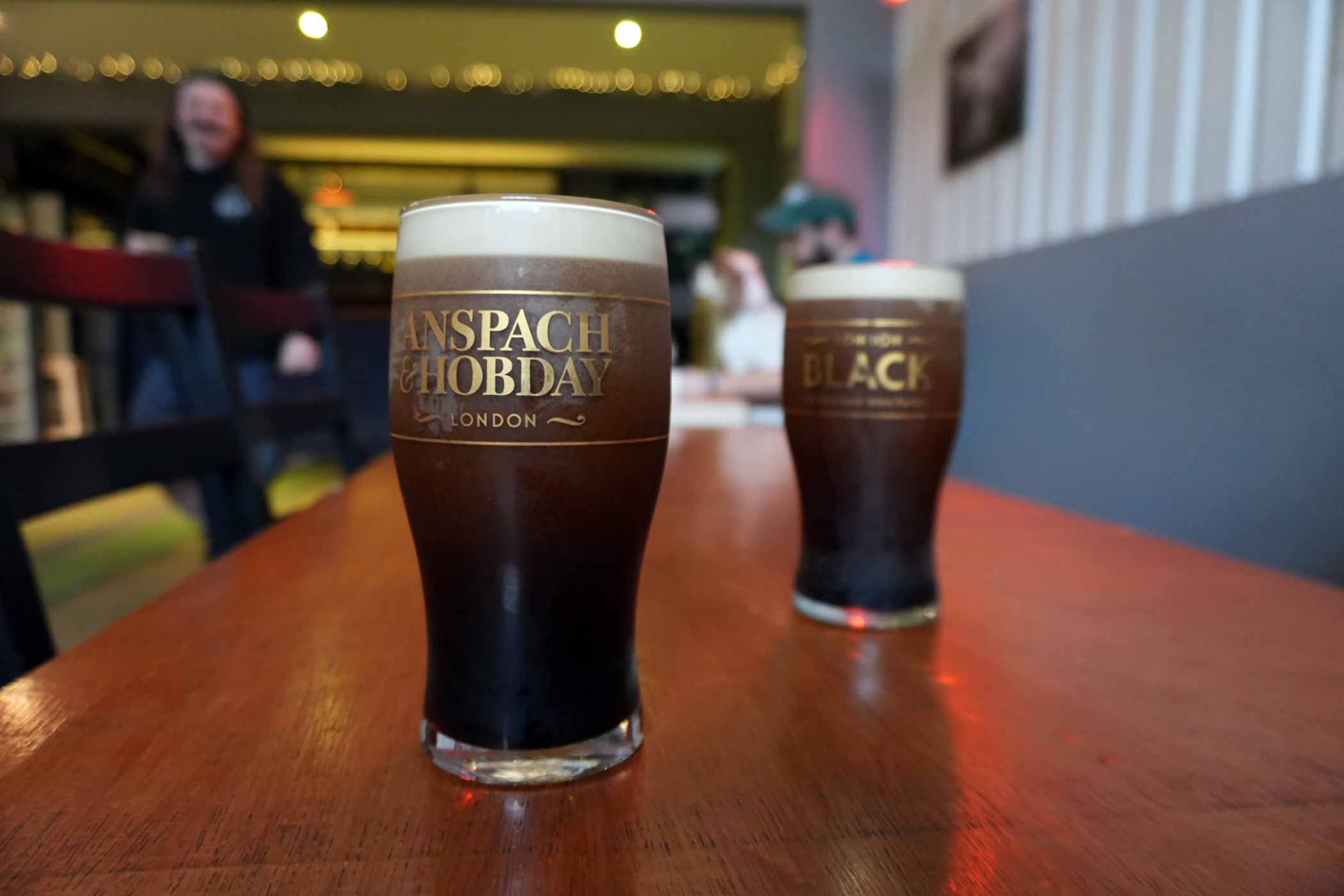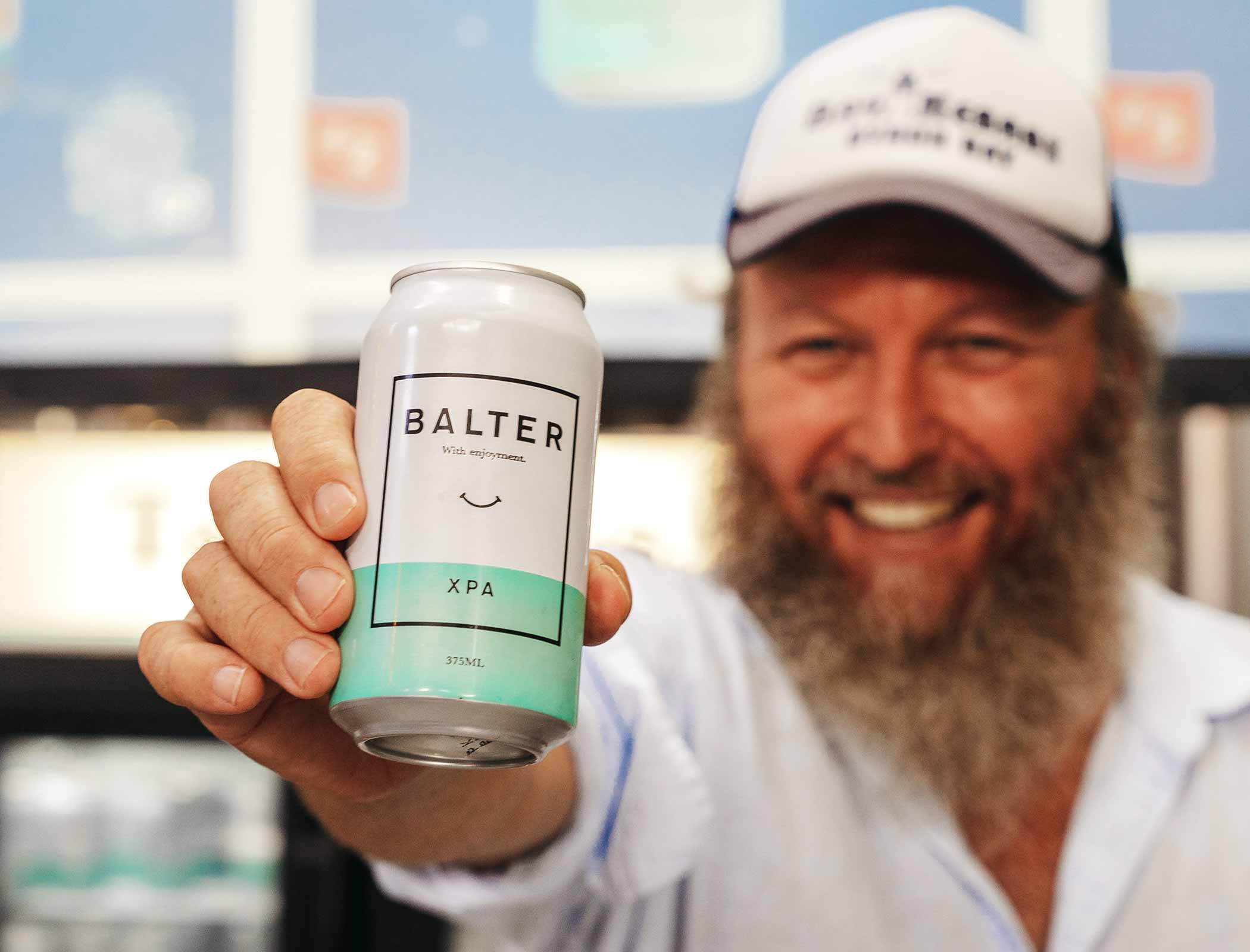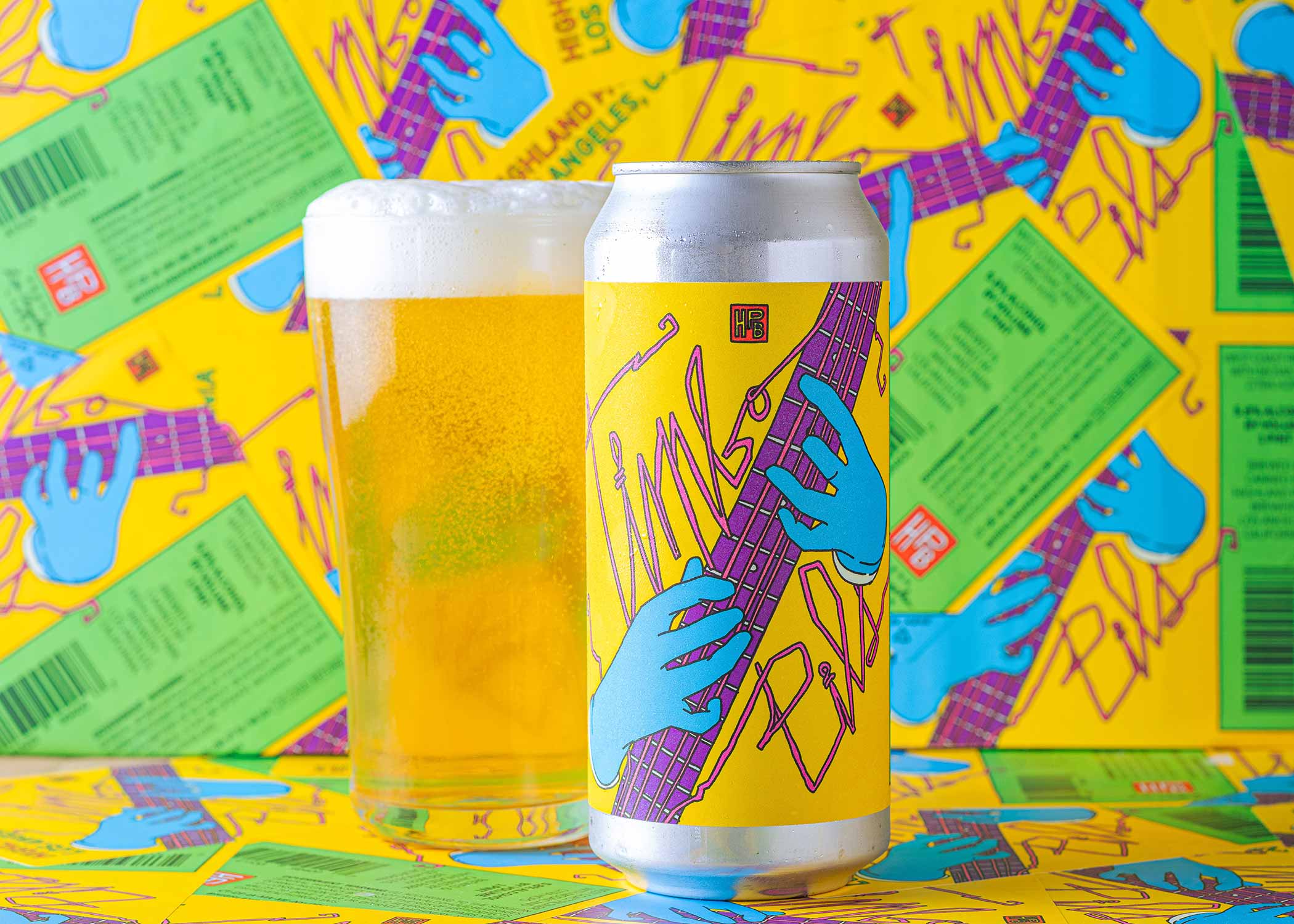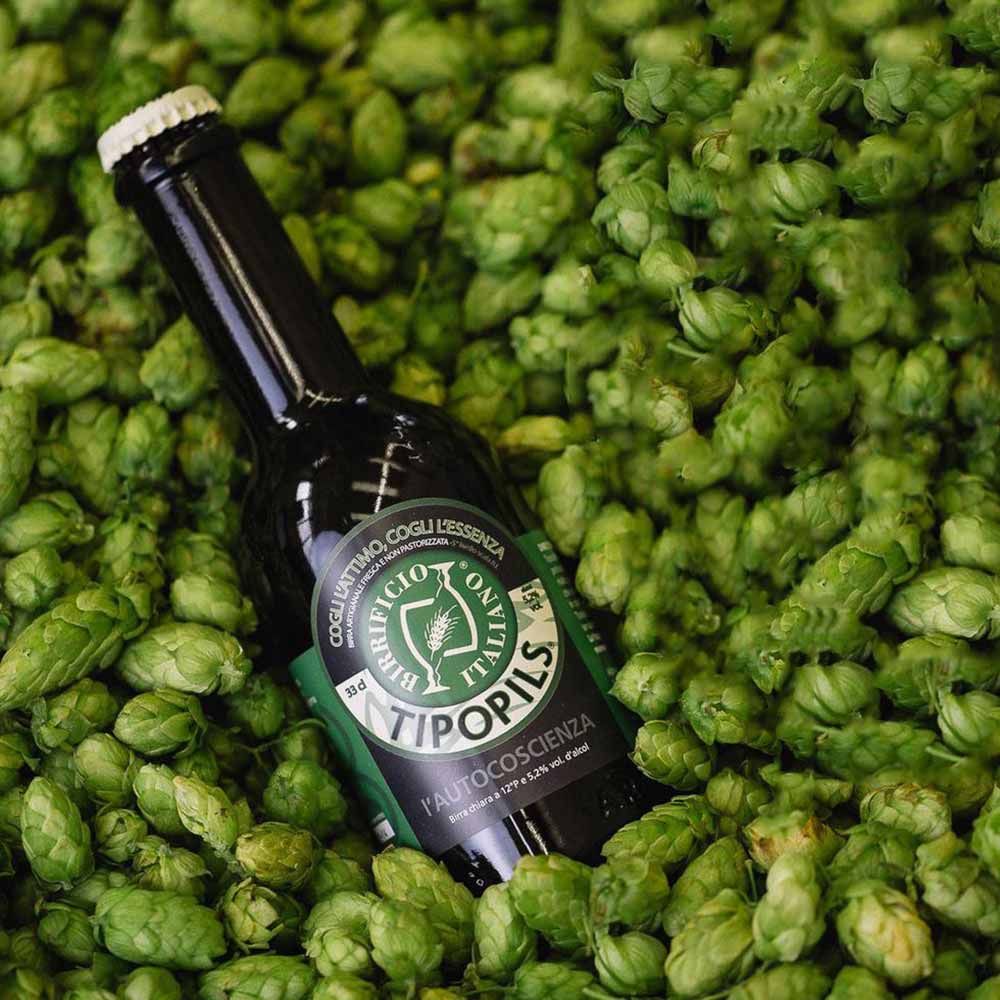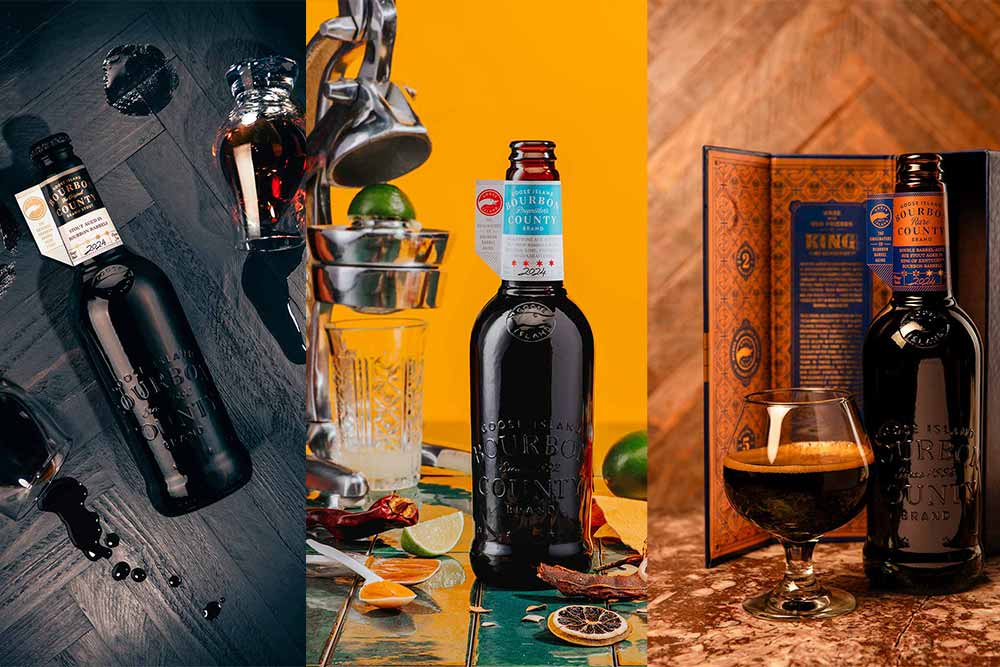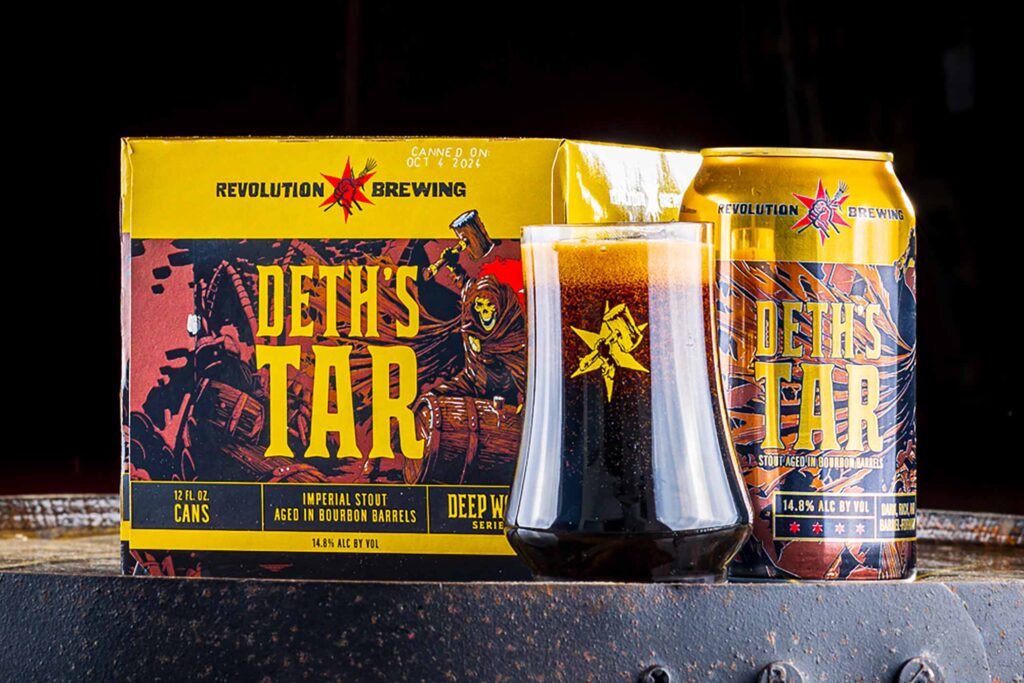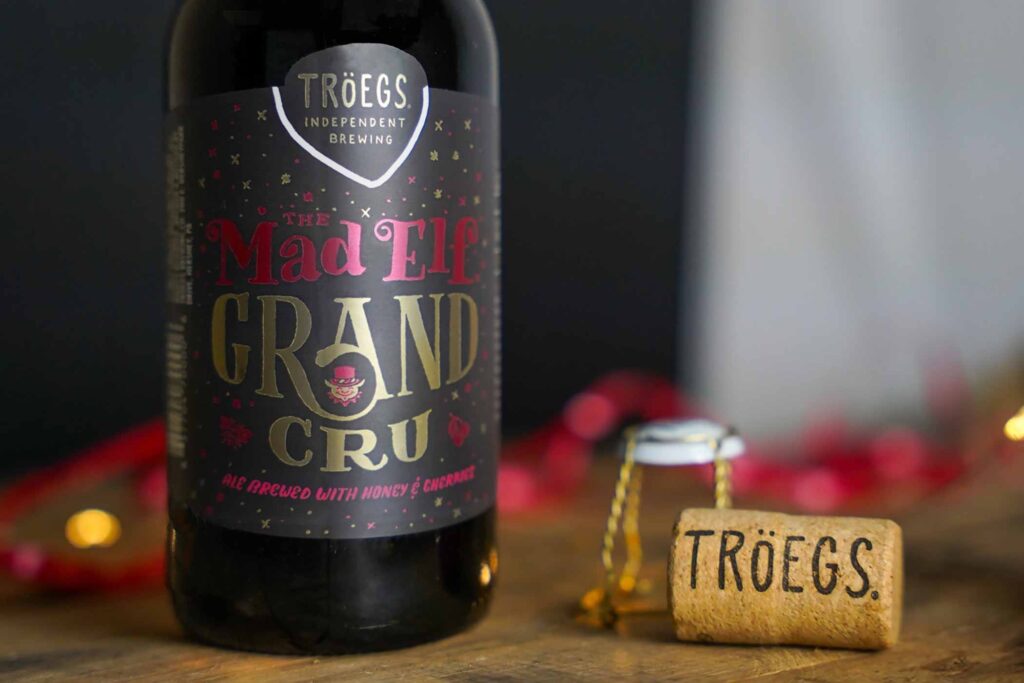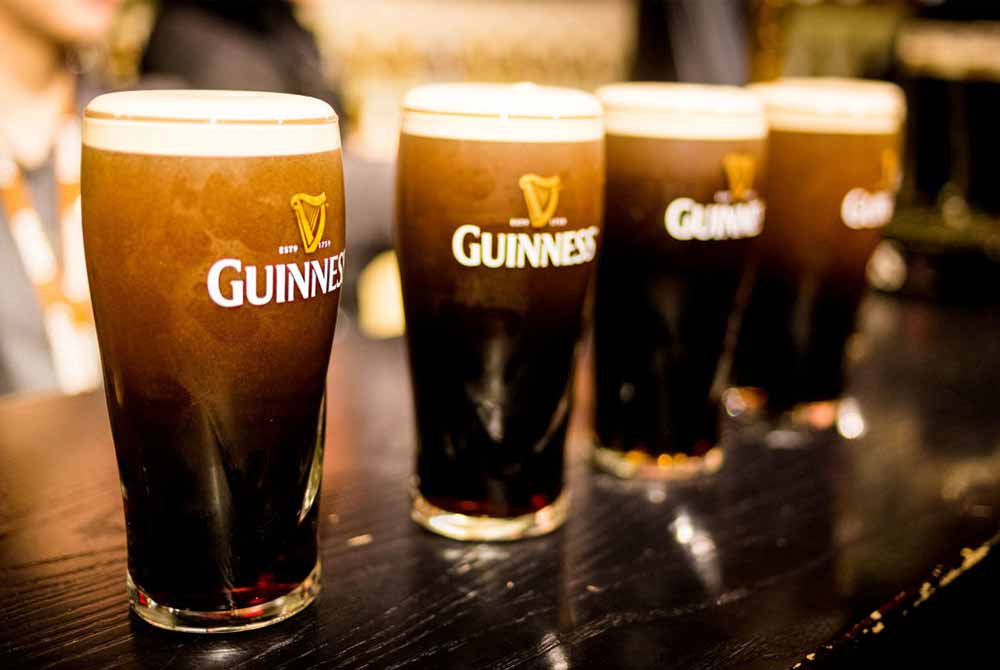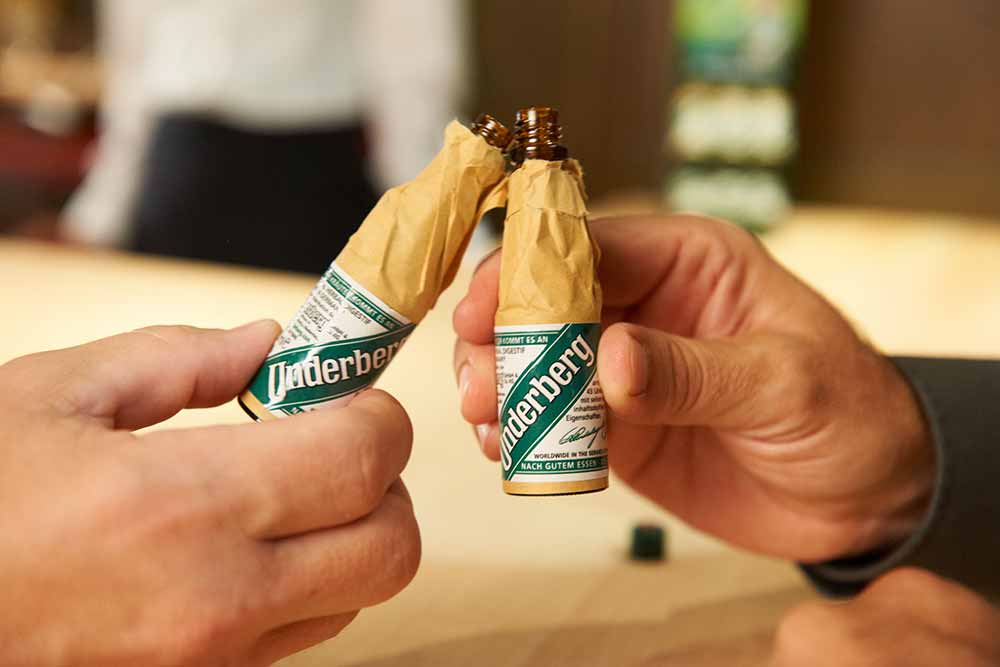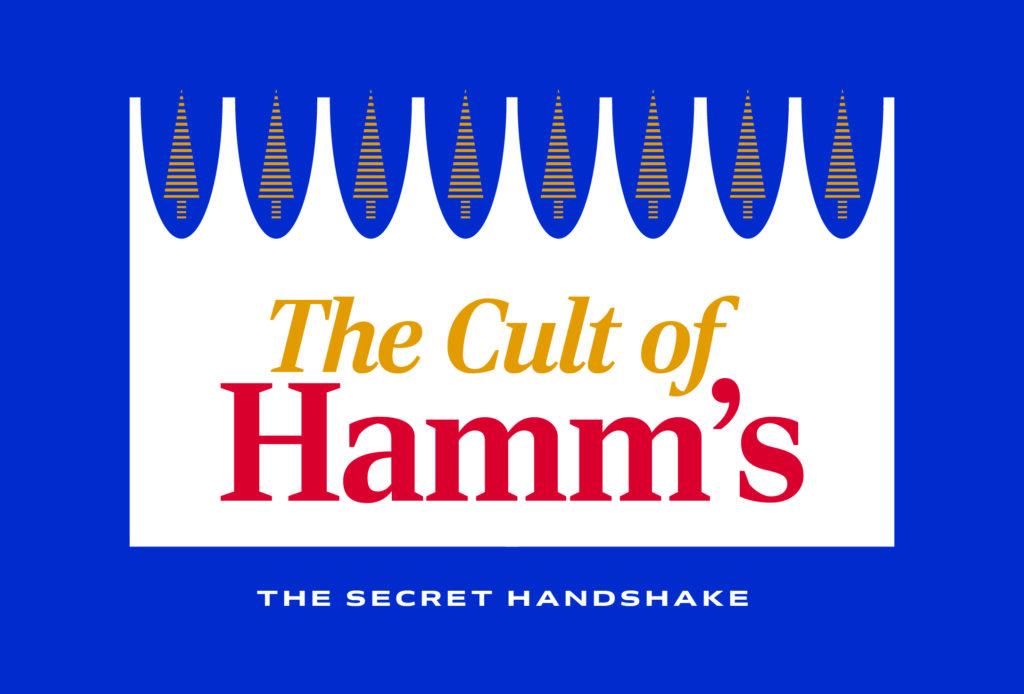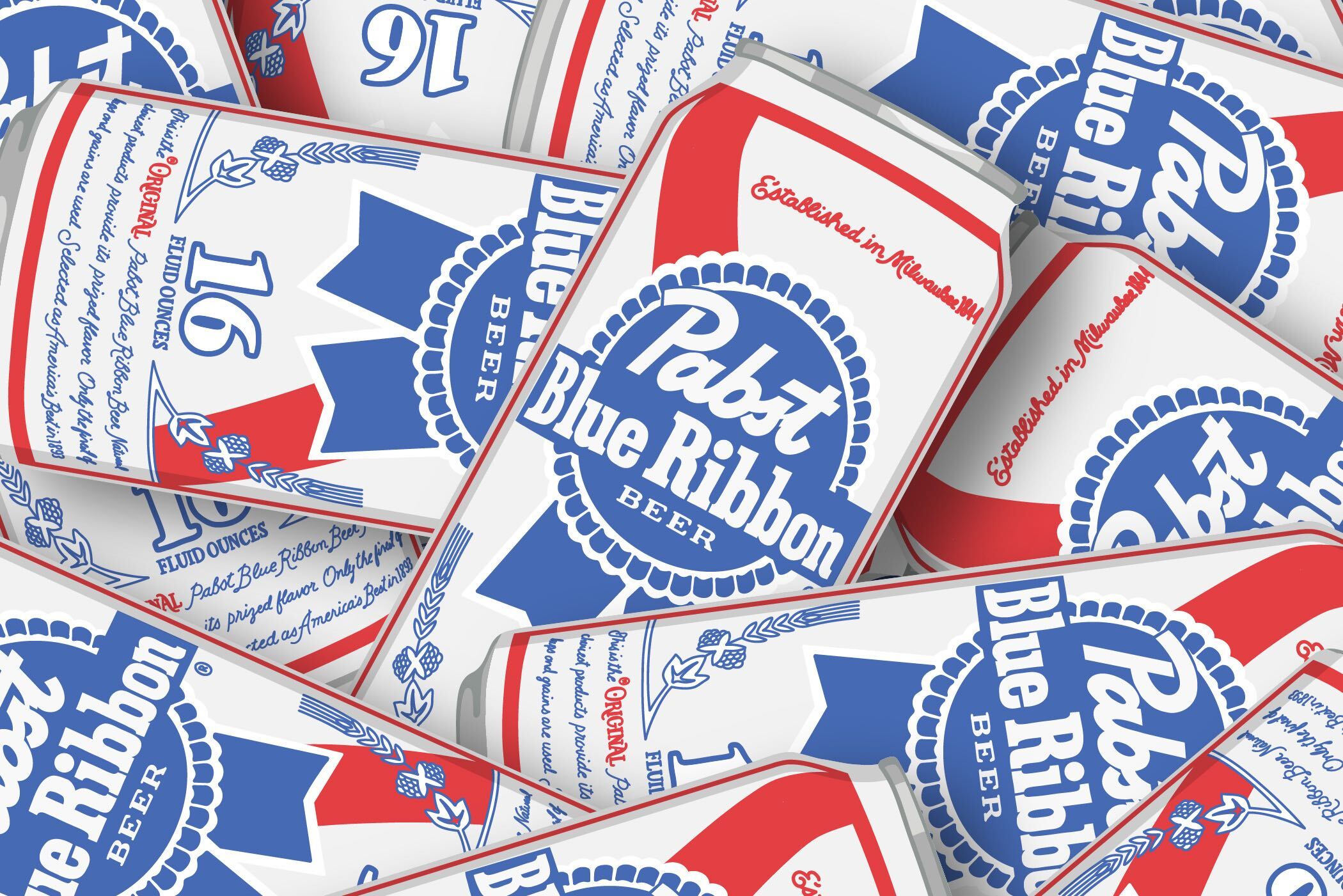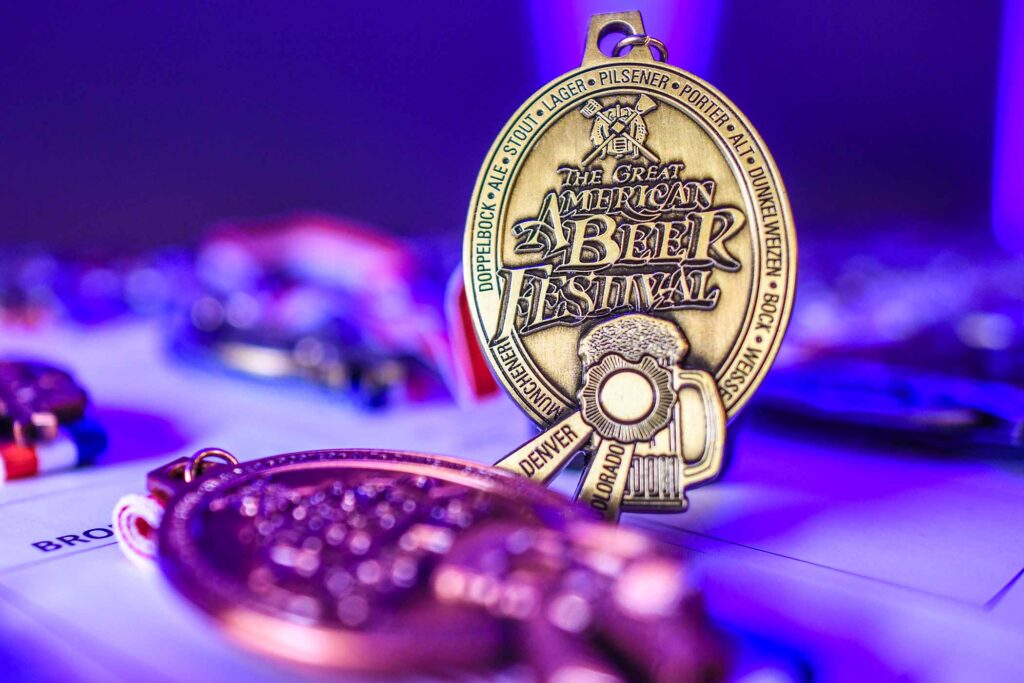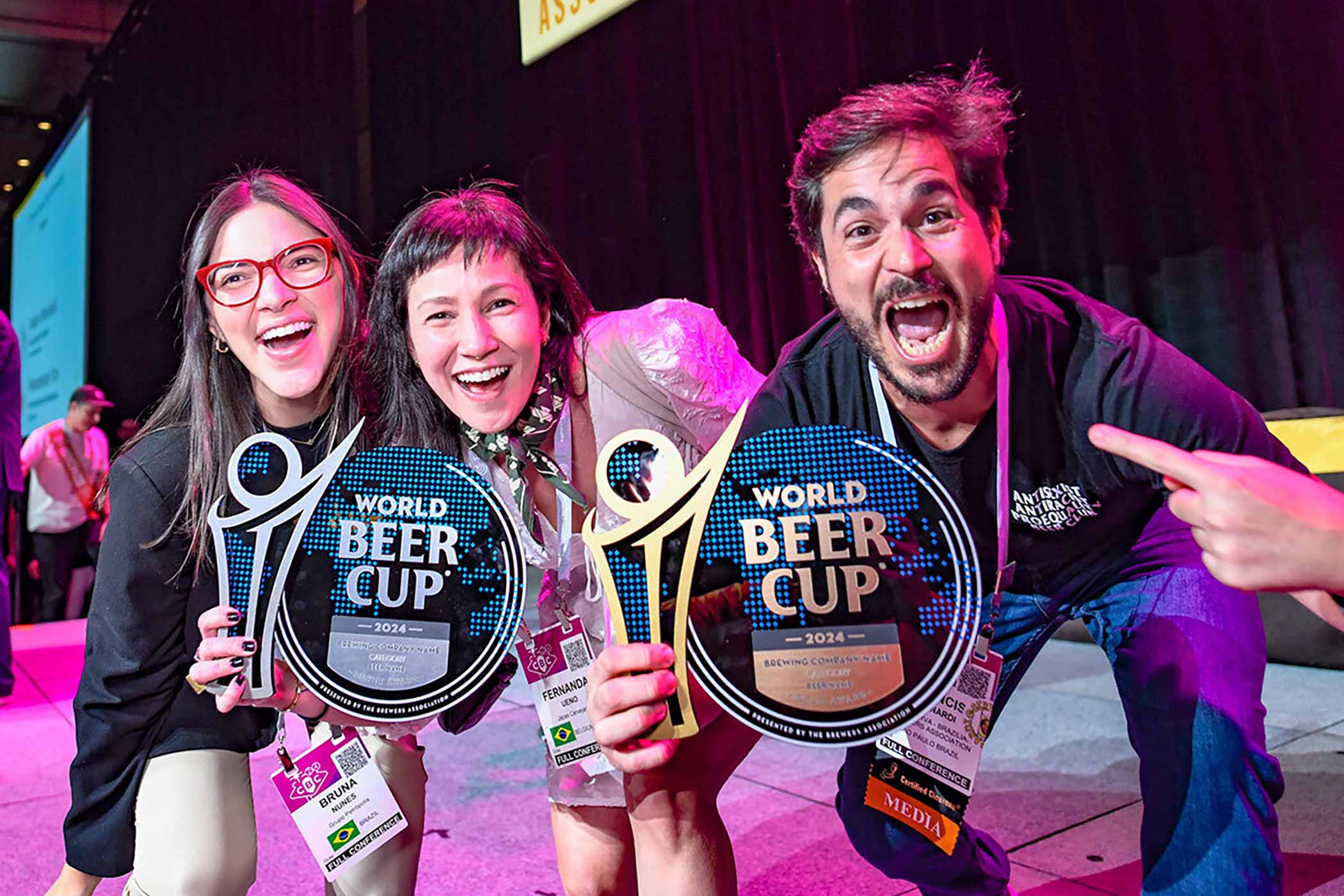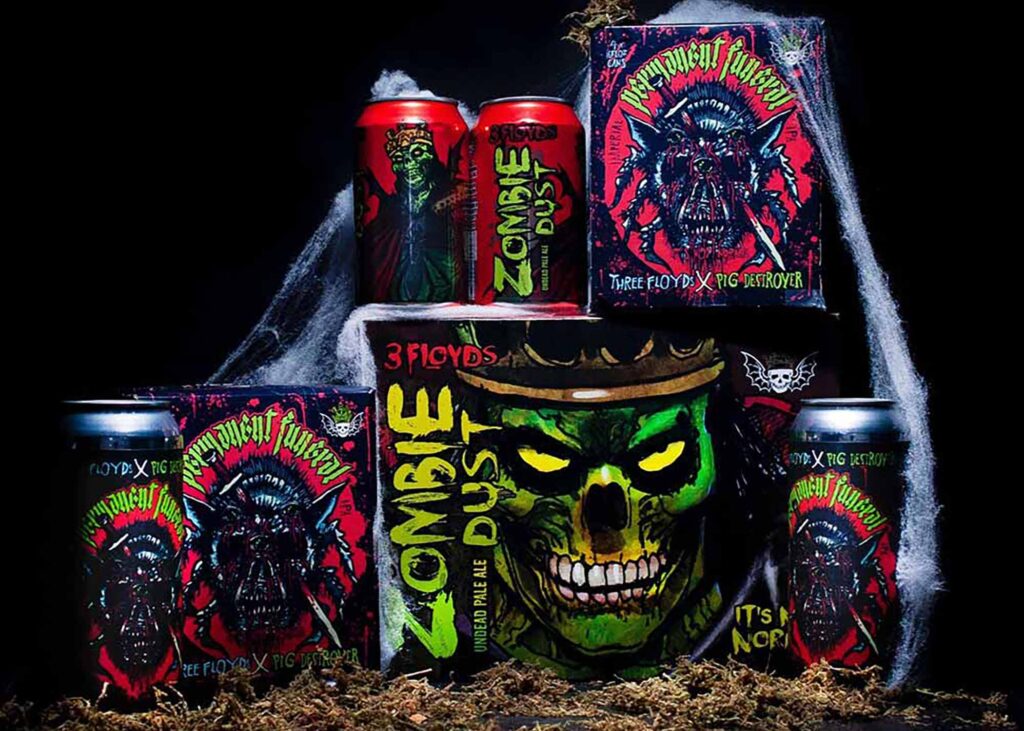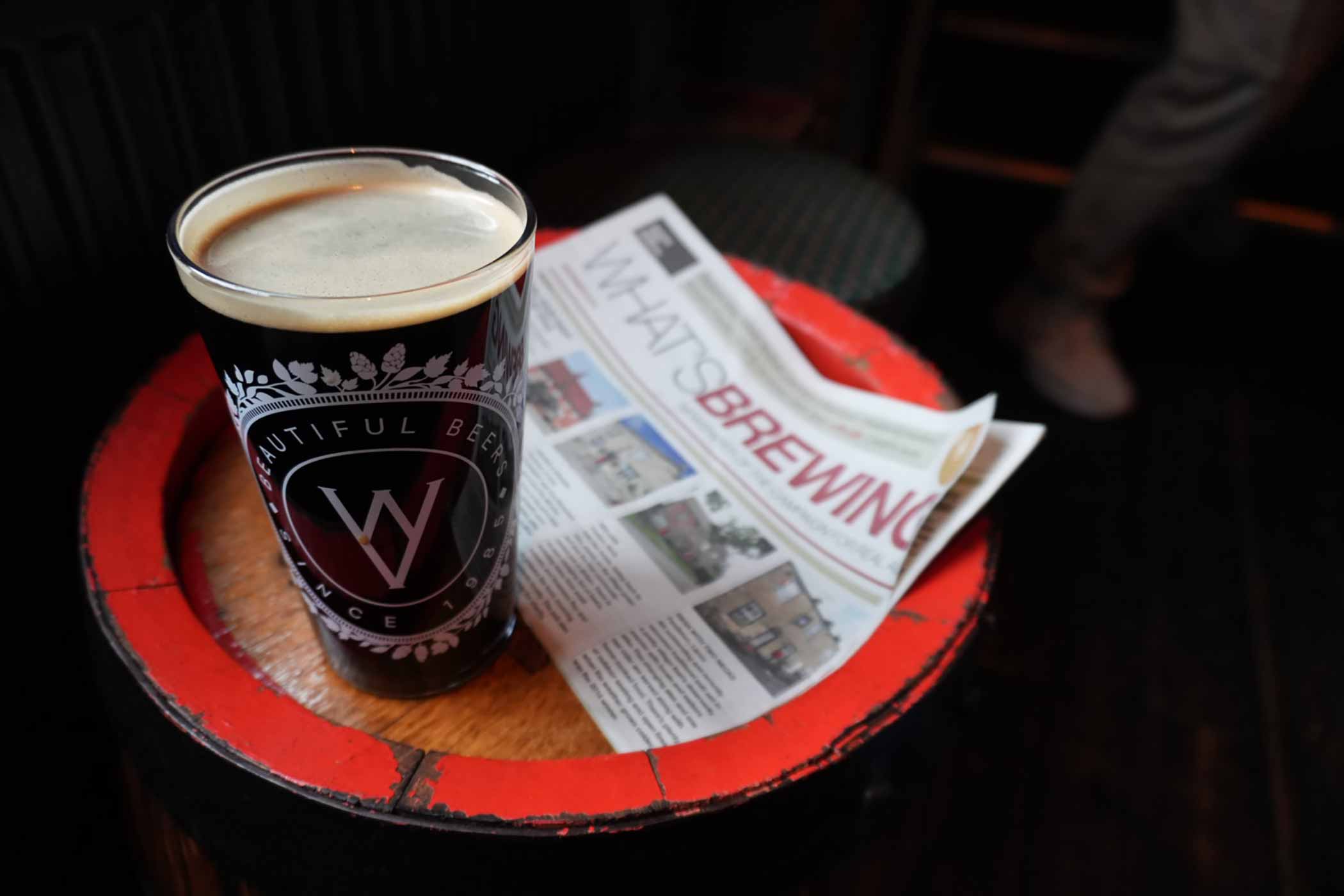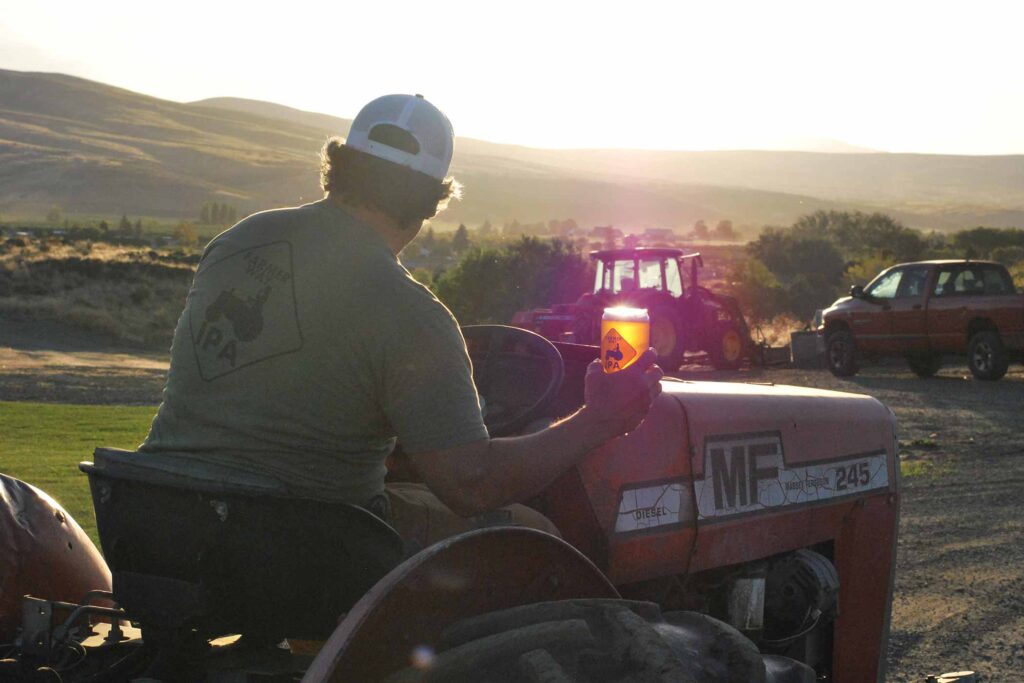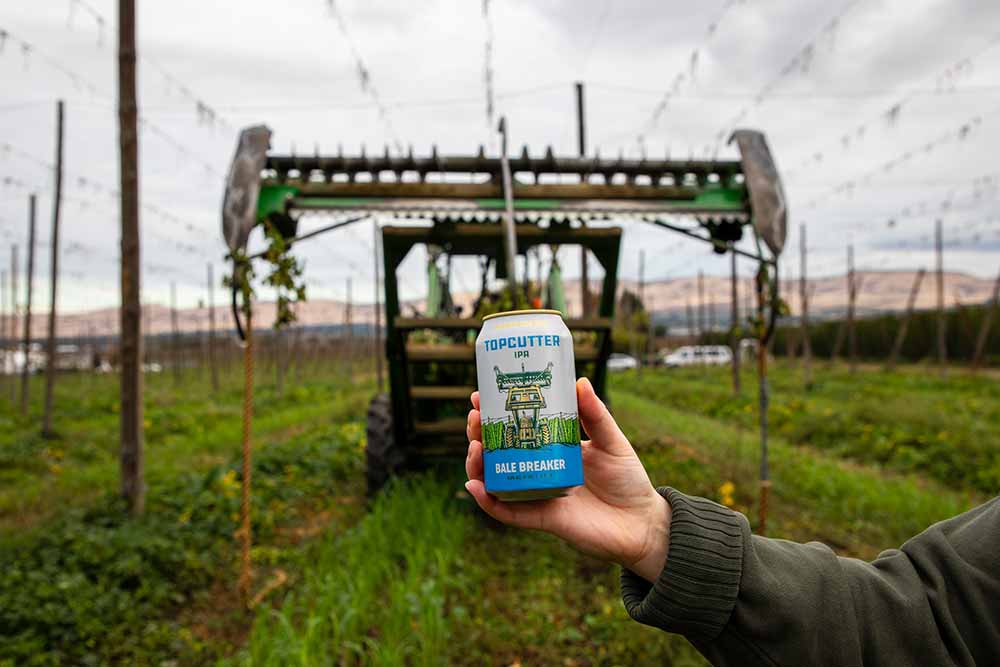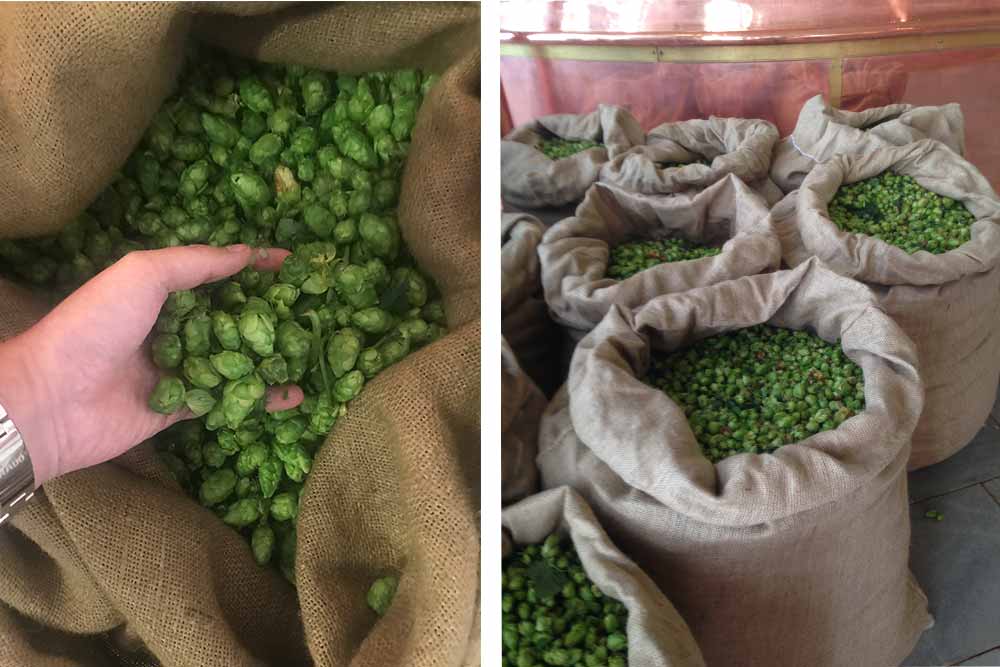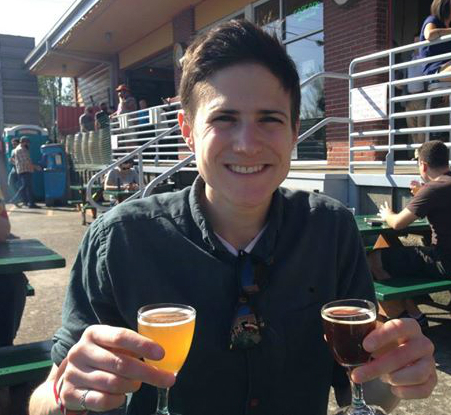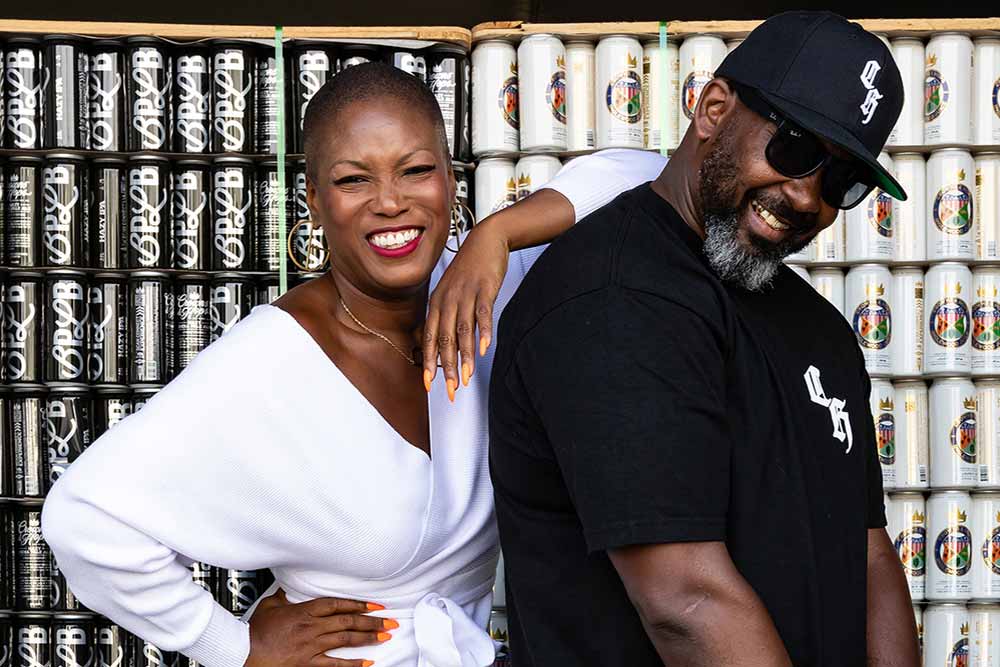Shop
Beers We’re Thankful for This Thanksgiving
We give thanks for these influential and life changing beers.
Looking for More Around the Holidays?
Let’s be honest: This year has been another one full of twists and turns. But as we round the corner to December, we’ve decided to make this the year of thanks. This holiday season, thank those close to you, such as your parents, siblings, better half, best friend, crazy aunt, or chosen family.
Of course, be thankful for your local beer shops and breweries who continued to bring you your favorite beer. Having a beer in your life has changed you and probably defined more than a few of your happier moments, or at least made them a bit tastier.
A few years ago, Hop Culture started a new piece by picking out the beers for which we were most thankful. This year, we’re bringing that idea back with a twist, choosing the categories of beers for which we give thanks.
A few of our picks have changed the industry today. A few of them shaped the industry a decade and change ago. Some speak to politics and social justice; others just demonstrate the rewards of bucking convention, while others can’t seem to stop winning awards. All of them are integral to what makes craft beer meaningful to us and, hopefully, to you all.
Having said that, we acknowledge that this list is subjective. Quite simply, we believe these beer categories have each impacted the industry or ourselves for different reasons. Do you have a beer that you’re thankful for this Thanksgiving? We’d love to hear your thoughts. DM us @hopculturemag and let us know!
Hop Culture’s Picks for the Beers We’re Thankful for This Thanksgiving
Beers With Big Ideas
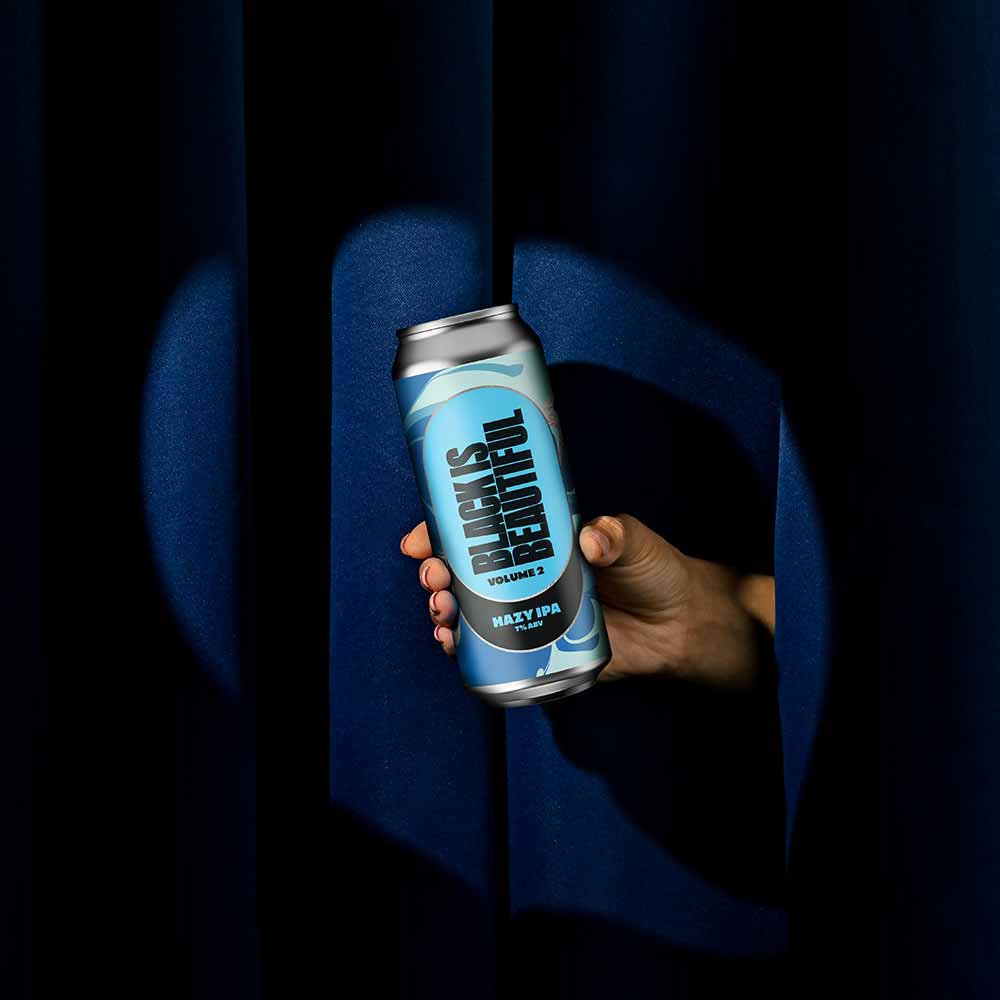
Photography courtesy of Black Is Beautiful
Justifying beer journalism and criticism is a never-ending and thankless task. After all, beer is beer, right? It’s an alcoholic beverage we drink either in good company or for personal satisfaction on our own time. Nothing more, nothing less. This, of course, is bullshit.
There’s more to beer than hops, malts, and a good, sustained buzz. Beer is an industry, a culture, and a people. Most importantly, beer can make an impact, reflecting where we are and who we are.
Most famously, beers like Black is Beautiful started by former Weathered Souls Co-Founder Marcus Baskerville in 2020. This is the most important and the most telling collaborative brewing effort in modern craft beer. A brewing project to raise awareness around police brutality and social injustice, Black is Beautiful rallied 1,600 breweries (in all fifty states and twenty-eight countries) to raise more than $5M for 501c3 organizations.
Watching brewers across the United States come together to make a statement about systemic inequality and violence was—in a word—beautiful.
Several years later, the project expanded to Vol. 2, with one dollar from every beer sold going directly to the National Black Brewers Association, a first-of-its-kind organization supporting Black- and Brown-owned breweries across the country.
This open-ended beer collaboration is just one example.
Countless breweries have followed suit, leveraging liquid in the can to promote social awareness and justice.
We’ve seen too many to list here, but a few that stood out in our minds that we’re thankful for include:
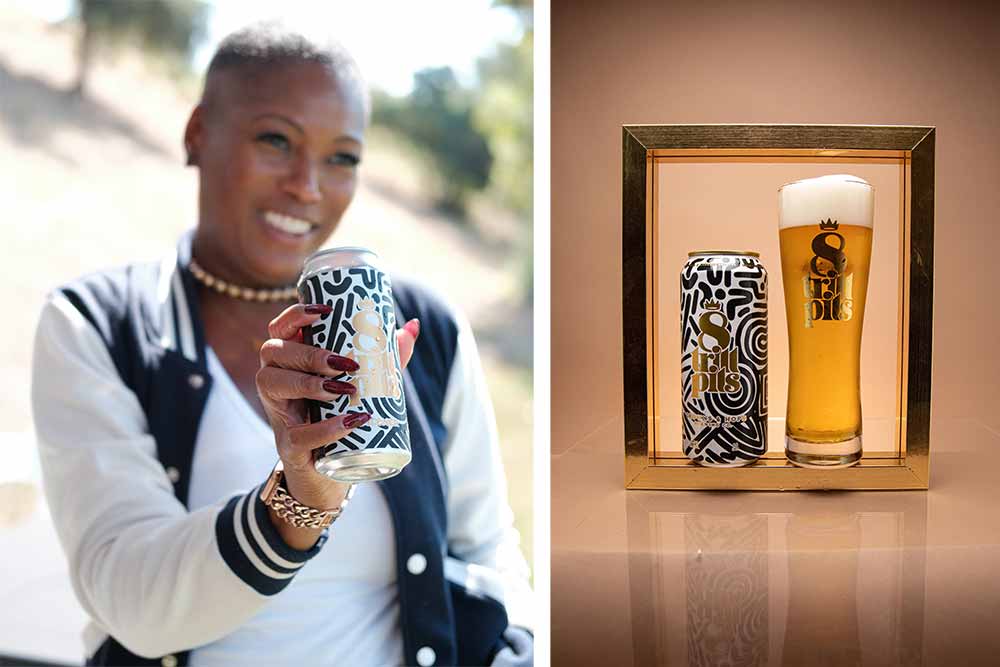
Photography courtesy of Crowns & Hops
Crowns & Hops 8 Trill Pils – This beer brewed with “NOBLE hops for a NOBLE cause,” according to Crowns & Hops, raises awareness and funds for racial equity in the industry and beyond.
Biere de Queer – Initially started by New Belgium, one of the most Queer-friendly breweries in the country, Biere de Queer, brewed for National Coming Out Day on Oct. 11th, celebrates the bravery it takes for those in the Queer community to come out.
.
Sierra Nevada’s Resilience – One of the most successful collab beer fundraisers, Resilience brought together 1,400 craft breweries, who donated one hundred percent of sales to support rebuilding after the destruction from the Camp Fire.
Beyond the Binary – A beer brewed by trans and gender-nonconforming beer professionals with the goal to support the National Center For Transgender Equality, Beyond the Binary represented equality for all at a time when freedoms for some in this country are being continually threatened.
Brave Noise – A beer advocating for safer, more inclusive spaces in the beer industry, Brave Noise has a massive goal in mind: A safe and discrimination-free beer industry.
Beers With Epic Stories
Yes, we realize that every beer has a story. But some beers just have a story, if you know what we mean.
Maybe you don’t, so here’s what we mean:
Brooklyn Brewery Fonio Pale Ale
It began with a chance meeting at Questlove’s house and ended with eight beers made with a 5,000-year-old miracle grain from West Africa called fonio.
Did you know that Sierra Nevada’s Pale Ale, arguably the most iconic American pale ale, grew thanks to a bit of help from Deadheads?
Russian River Pliny the Younger
One of the rarest beers in the world, Russian River’s Pliny the Younger, started as just a quiet, humble winter release. It wasn’t until BeerAdovate and Ratebeer ranked that triple IPA (although Vinnie technically calls it a quad IPA) as the number one beer in the world that people started lining up, literally.
In February 2010, the day started like any other for Vinnie and Natalie. They both got to the Santa Rosa pub at 7 a.m. to prep the pub for a typical Saturday.
Except Vinnie found a line of people waiting outside the pub despite the early morning hour.
“We’d never seen a line of people outside of our brewpub,” says Natalie, who recounted how Vinnie went out front to ask people what’s up.
“Hey guys, we don’t open for four hours, so what are you all doing here?” Vinnie asked.
The response he got? “We’re here for Pliny the Younger.”
The rest, as they say, is history.
“The interesting question is not who invented smoked beer,” Matthias Trum, sixth-generation brewer at Bamberg’s Schlenkerla, told us wryly from his office that used to be his childhood bedroom above the centuries-old German brewery that only makes rauchbier. “The interesting question is, who invented non-smoked beer?”
While rauchbier (aka smoked beer) was almost snuffed out after the invention of the smokeless kiln, Trum’s family and the town of Bamberg managed to keep the style alive.
How? Well, you know what they say: Where there’s smoke, there’s a 🔥story.
Did you know that a cooking show and a dusty electronic football game on an old shelf at the Salvation Army made one of the most iconic beers in American craft beer? 👇👇👇
Perhaps you’ve heard of the von Trapps?
Maybe in a little motion picture released in 1965 called “The Sound of Music.”
“It’s based on the book that my grandmother Maria [von Trapp] wrote,” von Trapp Brewing Owner Sam von Trapp tells us.
Yes, these are the von Trapps, the very same.
But if the “Sound of Music” in all its Julie Andrews glory captured the von Trapps’ story of survival, the brewery today carries on a different legacy: What happens after the credits roll?
Even if we tried, we probably couldn’t make up a story this good.
Anspach & Hobday’s London Black Nitro Porter
This nitro porter is giving Guinness a run for its money…seriously. And it’s just from this tiny little brewery under a train archway in London.
Beers Breaking Style Boundaries
We constantly have this conversation: Is there a beer style that doesn’t exist yet? Have we reached the limit of ingenuity in the industry? Perhaps we shouldn’t be surprised that the answer is still no.
While a time when hazy beer didn’t exist is long gone, brewers are still finding ways to pull the colloquial rabbit out of the hat.
Some styles don’t always work—here’s looking at you, Brut IPA…in the rearview.
Some are polarizing—cheesecake in my beer?
But others find roots, growing slowly and organically until we blink and realize the Brewers Association has made a whole new category for it—hello, Italian pilsner.
Here are a few of our favorites that remind us we haven’t yet reached the final frontier of beer.
Oh, we’re so extra for Extra Pale Ale, aka XPA. Australia’s hottest style, XPA, finally reached the States. So we did what good journalists do: We tracked down the man who revolutionized the style for all the “extra” details. We promise this story isn’t full of too many puns.
Timbo Pils – West Coast Pilsner
We won’t call this the new hazy, but the West Coast pilsner has made waves certainly up and down the West Coast and across the country. But did you know that it all started with one beer? And if Highland Park Brewery Co-Founders Bob Kunz and Tim McDonnell (who has since left to join Monday Night) are candid, this beer was a little bit of a happy accident.
Wayfinder Relapse IPA – Cold IPA
The Cold IPA has cooled off a little in 2024. But when former Wayfinder Beer Brewmaster Kevin Davey pioneered the style, it spread like wildfire.
Birrificio Italiano Tipopils – Italian Pilsner
As we mentioned above,the Brewers Association (BA) still announces new style categories on occasion. In fact, they announced style guidelines for a new category this past month: Italian pilsner.
“We’re excited to have a new home for the many Italian-Style Pilseners we’ve seen popping up in the global beer market over the past few years,” said BA Competition Director Chris Williams in a press release. “Giving these beers an opportunity to shine in their own standalone competition category gives us the opportunity to recognize this flavorful style. We look forward to seeing who makes the best Italian-style pilsener in the world for the 2025 World Beer Cup Competition.
We’ve been sweet on this style for quite some time. And its roots date back even further.
In 1996, Agostino Arioli—founder of a brewery in Como, Italy, called Birrificio Italiano—set out to make a hopped-up version of a northern German pilsner.
Leveraging a technique not as commonly used when making German Pils, the English cask dry-hopping process (although with maturation tanks instead), Arioli added small amounts of hop pellets to the beer, imparting old-world hop flavor into an unfiltered pilsner.
Arioli created history, although nobody could know at the time just how influential this beer would be. With that, he dubbed the beer Tipopils, or “kind of pils” in Italian.
In America, we can trace the rise of the Italian pilsner to one specific brewer: Matt Brynildson, brewmaster at Firestone Walker. After meeting Arioli and tasting his beer in person, Brynildson returned home and wrote the recipe for Pivo Pils. With Pivo Pils, Brynildson put his spin on the style, adding a touch of dry-hopping with Saphir.
We sat down with Brynildson to find that moment when Tipopils changed his life, inspiring him to track down the person who made it.
Beers That Get Better With Age
Goose Island Bourbon County Brand Stout
We spent six years in Chicago in the mid-2010s, when every Black Friday, people would line up like gangbusters for a chance to purchase the brewery’s iconic Bourbon County Brand Stout (BCBS).
Over ten years later, the brewery invited us to do a virtual tasting instead. After years without a drop of BCBS, we were curious if the beers would stand up to the test of time.
TL:DR – yes…and then some.
While Goose Island’s Senior Innovation Manager Michael Siegel, Senior Brewmaster Daryl Hoedtke, President Todd Ahsmann, and Brand Manager John Zadlo walked us through all six beers, a few stood out.
Original Bourbon County Brand Stout
The imperial stout aged in bourbon barrels between twelve to sixteen months, the OG proved timeless.
“Aroma wise, you get a lot of chocolate right off the bat, a little bit of roast, vanilla, certainly some dried fruit, and berries,” says Hoedtke. “For me, this really showcases what that extra time in the barrel does. I get a little bit more marshmallow character and nuttiness.”
We picked up a super balanced blend of Baker’s chocolate and toasted marshmallow with a building almost Szechuan pepper-like burn. We found this beer very seductive, reeling us into its dark depths.
Rare Bourbon County Brand Stout (2024)
At Goose Island, the barrel is treated as an ingredient as much as the water, malt, yeast, and hops. For Rare BCBS, Goose Island sourced a…wait for it…incredibly rare, prized King of Kentucky bourbon barrels.
But as Siegel points out, “When putting the name ‘rare’ on something … it one hundred percent has to mean something really special in this brewery, and this fantastic beer lives up to it.”
Ahsmann agrees, “This one turned out ridiculously delicious and worthy of that name ‘rare.’”
We got notes of vanilla custard, flan, Japanese-style toasted cheesecake, Spanish hot cocoa, and burnt sugar. At 18% ABV, the alcohol is definitely present, with a pleasant, drawn-out burn with the heat lingering as it enters your bloodstream.
Proprietor’s Bourbon County Brand Stout
Designed off a tamarind spoon candy found in many of Chicago’s corner stores “that you just lick off,” according to Siegel, this year’s Proprietor’s blend includes two different types of tamarind puree—one more watermelon and one earthier—lime puree, guajillo peppers, and piloncillo, a kind of unrefined sugarcane.
“It’s a little spicy, sweet, tart,” says Siegel. “It’s delightful.”
Fun, flavorful, and complex, Proprietor’s sounds crazy on paper but explodes in your mouth.
The brand itself honors the original BCBS. “When I look back at Bourbon County Brand Stout Original in 1992, there was no frame of reference for that beer,” says Zadlo, noting that the beer was even disqualified from the Great American Beer Festival because no category existed for it. “But Chicago didn’t care if it was a written or established beer style. They were willing to take a chance on it, so Proprietor carries the torch year after year.”
Of all six of the BCBS variants we tried, Proprietor’s was the one we kept coming back to again and again.
Revolution Brewing’s Deth’s Tar
A long time ago, in a galaxy far, far away…called Chicago, Revolution opened its doors. In 2010, when Deth (actually pronounced similarly to teeth) started the brewery, he always planned to have a barrel-aged beer program, specifically targeting imperial stouts.
Deth’s Tar wasn’t the first, but it’s made the biggest bang. The 14.8% ABV barrel-aged imperial oatmeal stout has become the cornerstone of Revolution’s barrel-aged program.
When Revolution Co-Founder Josh Deth thinks of the barrel-aged program at Revolution, he feels Deth’s Tar is the…star (sorry, not sorry 🤷♀️).
After all, the beer is a play on words, right?
“Josh killed two birds with one stone: He got a cool Star Wars reference in there with the Death Star,” says Revolution Brewer Jim Cibak, “and his last name is actually Deth, D-E-T-H!”
But what made it so different?
“We had made other stouts and put them in the barrel before we brewed Deth’s Tar, but this beer was designed specifically for barrel aging,” Deth says. “The whiskey and wood magically balance all those dark and roasty notes. The creamy and fudge characteristics we highlight in our imperial oatmeal stout base are intended to all come together after aging.”
It’s just one of the reasons that Deth’s Tar remains one of the most iconic American stouts. It’s something that we go back to again and again and again. Much like the Star Wars anthology itself.
Beers That Never Age
Holiday Beers
Why, for the love of St. Nick, do we love Christmas beers so much? Take a look behind any storied holiday beer, and you’ll find a tradition as rich as opening presents underneath the tree, drinking hot cocoa around the fire, or lighting the menorah for Hanukkah or kinara for Kwanzaa.
These beers are timeless, and we bet you could name some of them if you tried.
At five in the morning, Chris Hayden got off the plane in Dublin, Ireland. He had flown across the Atlantic Ocean for only one thing: to drink a pint of Guinness at the original St. James’s Gate location. Hayden couldn’t even check into his hotel yet. But he didn’t care. He stored his bags, walked over to the Guinness Storehouse at St. James’s Gate, and waited outside for the brewery to open. Once inside, he got a pint from the source up in The Gravity Bar, sat down with a 360-degree view of the city, and took that first sip. “It hit me,” says Hayden, an ardent Guinness fan with over 17,000 check-ins of Guinness Draught Stout on Untappd. “Oh my god. This is it!”
What is it about that pint of dark, creamy liquid that people love so much?
What about Guinness has captured the hearts and minds of fans in countless countries?
We found some of the answers.
Unwrap the brown paper, unscrew the plastic green cap, slap the little amber bottle down on the table, pick it up with your mouth, and let the collection of bitters and herbs in this digestif drip down your throat. You’ve just drunk an Underberg.
For years now, in America, these ubiquitous bottles have graced tables at beer bars, stood at attention like a line of infantry soldiers behind the bar, and captivated drinkers worldwide.
But this German digestif has actually been around for over 175 years.
Never underestimate how many people love Underberg!
A cult classic, Hamm’s has the spirit of the land of the sky-blue water and is considered like a secret handshake in the industry. We found out why.
Raise your hand if, like us, the first beer you shotgunned started with three little letters: PBR.
The beer we took to off-campus parties and marathon N64 GoldenEye 007 games seems like just a classic college lager.
But if you look behind the ribbon, there’s so much more to this beer than meets the eye.
The lawnmower beer won America’s Best in the Nineteenth Century—1893, to be precise—and continues to be the darling of dive bars and drinking occasions today. When we all think of that quintessential American beer, you’d be hard-pressed to find one more qualified than PBR.
But what makes PBR such a household name? What makes the can with the blue ribbon a favorite in the hands of hipsters? And why has the red, white, and blue can become such an iconic symbol on shelves?
Oh, and where did that blue ribbon come from anyway?
Known as “Genny [pronounced Jenny] Cream” or just “Genesee,” Genesee Cream Ale was first brewed in the 1960s under the tagline “smooth like a lager and crisp like an ale.” Over the last sixty-plus years, the beer has won numerous awards, developing a cult-like following for its distinguished taste, history, and regionality.
“It was ’Gansett pounder cans and Genny thirty racks taking on the ‘big guys’ in my cheap drinking heart,” Jack’s Abby Sales Manager Matt Ozelius once told us. And we know Ozelius’ heart isn’t the only one.
Highly Rated and Award-Winning Beers
Winner, winner, beer dinner! Over the last few years, we’ve been lucky enough to attend two of the most significant American awards ceremonies—the Great American Beer Festival and the World Beer Cup. And every time we leave the auditorium, we’re inspired to try beers from a bunch of breweries new to us and happy for some of our old friends who won.
This past spring, our friends at Untappd even got in on the action with its first-ever Untappd Community Awards, which recognized the very best beers around the world in different substyles on the world’s largest social media app for beer.
Let’s be honest: If you walk into a taproom and see a beer that’s won an award on the menu…you’re probably ordering it.
Great American Beer Festival Awards
“This is a celebration of the industry,” Ohio Craft Brewers Association Deputy Director Justin Hemminger told us as he proudly waved a red, white, and blue Ohio flag at the Colorado Convention Center in Denver. “Everyone roots for everyone.”
When you see winners in the most-entered categories—Juicy or Hazy India Pale Ale, West Coast-Style India Pale Ale, and American-Style India Pale Ale—come from all over the country—California to Kansas to Illinois—you start to understand what Hemminger means.
Check out all the winners.
Like GABF…but global!
One of the world’s most prestigious and esteemed craft beer competitions, the World Beer Cup has celebrated the best in beer every year since the Brewers Association started handing out awards in 1996. This year, an international panel of 280 judges tasted 9,300 beers in 110 categories from 2,060 breweries in 50 countries.
“We tout the World Beer Cup as the largest and most prestigious beer competition in the world,” said Chris Williams, competition director at the Brewers Association, during his opening remarks at the 2024 World Beer Cup Awards Ceremony. “2024 was no exception.”
The first-ever Untappd Community Awards celebrated the thousands of great breweries and beers rated as best-in-class by Untappd’s 11 million users in 2023! Countless breweries globally brew amazing beer, and Untappd recognized (and has even heard from a few brewers through the years!) that they could do a better job of highlighting the best non-IPAs and barrel-aged stouts that don’t garner the eye-popping 4.0+ average ratings. While there are plenty of awards to go around for various IPA and stout substyles, the Untappd Community Awards plans to annually recognize the very best beers in all qualifying substyles!
For the first year, Untappd doled out awards to the top three beers in all qualifying substyles across all fifty U.S. states and Washington, D.C., as well as the fifty countries with the most check-ins from 2023.
Over 1.5 million beers were rated in 2023, meaning fewer than 1.65% of beers (25,302 in total) won awards. Impressively, nearly 30% of brewers (7,427 total) produced an award-winning beer!
Who won? What beers should you go seek out and check in right now?
You’ll only know by checking out the list of winners!
Untappd Beers With the Most 5-Star Check-Ins
In 2010, Untappd Founder Greg Avola had an idea: Build a social media platform for the craft beer community.
Over these last baker’s-dozen-plus-one years, Untappd has grown into the world’s largest digital platform for craft beer. (Psst: 11 billion registered members of the community.)
So when a beer hits a coveted 5.0 rating on the app, you know it has some cultural clout.
We looked at the beers currently pulling in a 5.0 ranking in 2024 and gave our two cents (for what it’s worth) on what makes them some of the highest-rated beers on Untappd this year.
Two-Time CAMRA Pub of the Year
I hopped off the train and walked ten minutes to the center of town, my suitcase trailing behind me along the brick-red cobblestone. In the middle of town, I found myself standing outside a little unassuming pub called the Tamworth Tap.
Why, you might ask, did I detour from my originally scheduled train ride between London and Manchester?
Why did I find myself in a market town of around 78,000 located fourteen miles northeast of Birmingham on Easter Sunday morning?
Because I’d heard about a place in Staffordshire that had done something almost no one else had ever done before…
Fresh Hop Beers
This fall, the Hop Culture team took a bucket-list trip to Washington, including the Yakima Valley, for the hop harvest. Yes, we journeyed to the heart of hops-land. Tasting fresh-hop beers with hops that spent literally four minutes from picking to kettle in a field surrounded by hops was indeed something we’d never experienced before. It gave us a new appreciation for fresh-hop beers, and we returned home eternally grateful.
We had the opportunity to visit the Loza Farms, the only Hispanic-owned commercial hop farm in the country. And CLS Farms, a woman-owned and run operation known for perfecting late-picked El Dorado, among other hops. They also have the coolest brewer hangout spot in the entire Yakima Valley, in our humble opinion.
We even got an exclusive sneak peek at a new Yakima Valley Hops x John I. Haas Next-Gen hop selecting process designed specifically for smaller breweries who can’t commit to huge lots often required at bigger hop companies.
It’s hard to explain. But to see the fields, the farms, the very dirt where family-run farms have planted their roots and continue to keep this little beer engine humming humbled us.
“Welcome to Yakima. The Palm Springs of Washington,” reads a black, white, and red billboard on your way into town. We’ve been to Palm Springs, and we’ll admit before traveling to the Yakima Valley, we didn’t think of the region of the country that produces seventy-five percent of all hops in the United States as a desert. But as Issaquah, WA-based Formula Brewing Head Brewer Jesse Brown reminded us, technically, the Yakima Valley is a semi-arid desert, regularly getting 300 days of sunshine yearly.
“It’s a desert, but it’s also a huge fertile valley,” explains Brown, who feels blessed to live so close to the country’s hop heaven. “I don’t take it for granted. Every year, we have a fresh-hop season, and I get as excited as a little kid!”
A bucket list trip for any brewer in the industry, visiting the Yakima Valley, especially during the hop harvest, is where you’ll drink the freshest fresh-hop beers, leaving you a little happier than when you first arrived.
At Bale Breaker, We Found the Freshest Fresh-Hop Beers
At Bale Breaker, a unique brewery and hop farm in Yakima, WA, you’ll find the freshest of fresh-hop beers in a magical setting.
There’s nothing quite like drinking a beer made with hops that spent literally just four minutes from picking to pint (well, from the picking machine to the brewery, at least. Getting to the glass takes a little longer). Bale Breaker is like a carefully knitted fabric made of wire that hangs across poles in a hop yard, connecting growers, farmers, brewers, and friends.
Unlike anywhere else in the country, those wires cross at Bale Breaker, right at the heart of everything.
Because at this family-run brewery, wife-and-husband team Meghann Quinn and Kevin Quinn and Meghann’s brother (also) Kevin Smith (known as “Smitty”) aren’t just making beer, they’re growing it, too. Well, that is, one of the beer’s main ingredients.
“To our knowledge, we’re the only [brewery] on a commercial hop farm, and we’re the only one that grows all their own hops,” Kevin told me as he walked us around the 16,000-sq-ft facility in Yakima, WA. “In our year-round beers, one hundred percent of the hops in there we grow.”
So it made sense that when Yakima Valley Tourism brought me and Hop Culture Social Media Manager Magic Muncie to go where the hops are born (could that be the name of a new children’s book?), they took us to Bale Breaker first.
At Bale Breaker, we experienced a sense of awe and honor.
And we know we’re not the only ones because, if we had to imagine (and pardon our French), this brewery and farm must be the wet-hop dream of brewers everywhere.
Hidden Fresh-Hop Beers in Czechia
Just a little reminder that Yakima isn’t the only place where you can drink fresh-hop beers. In fact, the United States isn’t the only place where you can drink fresh-hop beers.
Inspired by American brewers’ love of fresh-hop beers, Budvar’s tenth Brewmaster, Adam Brož, brought this tradition to Czechia.
While visiting on a trade mission trip in April, Lee-Weitz had an incredible opportunity to taste Budvar’s greatest secret—fresh-hop beers that the public never gets to try.

